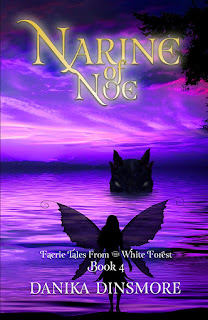Guest Post: Perspective and Intention + GIVEAWAY! (Danika Dinsmore)
First off, I
would like to thank Holly Schindler and the other folks at Smack Dab in the
Middle for hosting me on the first stop of my Narine of Noe blog tour.
If you
aren’t familiar with my blog,
I enjoy using real life events, lessons, stories, etc as jumping off points for
writing exercises. Life, as we all know it, can be stranger than fiction. But
more than that, if, as a writer, I examine closely what it means to be human,
where the messiness of being alive and functioning happens, it helps me to
develop “believable” characters and situations, even while writing fantasy in a
world where there are no humans!
Due to recent
events in my life I have been thinking a lot about both perspective and intention.
My husband
is a conflict resolution specialist. He once said, “The source of conflict is
any time something that we care about is affected in some way. A consistent contributing
factor to conflict is a misattribution of intent.”
If we look
at the world (and the people in it) as a place that intends to do us harm, and
the people around us as people looking to be cruel and hurtful, then we will often
perceive their actions as cruel and hurtful no matter what they do or say. In
my house we call this “looking for evidence.” And if we are really stuck in our story, even when someone
tries to share their true intentions, we often don’t believe them. The evidence
speaks for itself, right?
(NOTE: this is not to trivialize nor
ignore situations in which people DO live in places where they are literally
physically at risk.)
As a writer,
this idea of misattribution of intent is useful for plot and character
development. I know that I personally hate it when my intentions are questioned
or misinterpreted. How can I prove what my intentions were? All the other
person has is my word and when someone doesn’t trust my intent, it’s a
difficult space from which to untangle a conflict.
As a reader,
I find that I greatly sympathize with characters whose intentions are
misunderstood. Especially when the intentions are good-hearted and sincere. For
example, your character could give a heart-felt gift to someone that they
interpret as rubbing something in their face, teasing them, etc. and the cycle
of hurt begins.
Another use
of this idea in storytelling is to place an innocent into a dangerous situation
(or humorous one, for that matter) in which they believe everyone’s intentions
are good when they are actually not.
In Narine of Noe, I take both of these
ideas to the extreme. Narine is fairly innocent. She has no reason not to trust
the intentions of those around her, in particular her best friend and the wise
World Sages. However, the energetic balance of the world shifts and, save for
Narine and a few others who were protected, no one trusts anyone’s intentions
any longer. The miscommunication and accusations grow until there are
disastrous results. Most heart-breaking is that her own best friend now sees
her intentions as selfish, vindictive, scheming – and no matter what Narine
says, she cannot convince her otherwise.
So, here’s a
fun writing exercise. Take a scene you have already written and play with both
the intentions of each character AND the misinterpretation of those intentions.
Through a certain lens, have a character see the world as completely against
her and each statement or action as proof. Can love look like cruelty? Can
generosity appear as mocking? Can an innocent question appear as accusation or
blame? What kind of tension and conflict can you create using misunderstanding
of intention?
And if you
don’t have a scene try out this timed writing
exercise:
1) Set
your timer for 5-7 minutes. Using the start line below, write without stopping
and without editing. If you get stuck, just write about being stuck (gosh,
I’m stuck, my mind feels like a piece of cheese…) OR just keep writing the
start line over with a different response each time.
Start line: My
characters had such good intentions when he/she . . .
2) Set
your timer for 5-7 minutes. Using one of the start lines below, write without
stopping and without editing.
Start line: My
character was completely misunderstood when she . . .
3) Set
your timer for 7-10 minutes. Using one of the start lines below, write without
stopping and without editing.
Start line: Feeling
misunderstood, my character builds a wall around herself that looks like . . .
Happy
writing and Happy New Year!
~
Anyone interested in writing a review for any of Books 1-3 can
contact Danika at danika.dinsmore@gmail.com for a free
ebook copy of the omnibus edition. Just mention you saw the
offer on this site.
Danika
Dinsmore is an award-winning author, performance artist, and
educator. Over the past 25 years she has developed content for
the page, stage, screen, and web. Danika currently works and
plays in speculative fiction with an emphasis on juvenile &
young adult literature. Inspired by her children’s fantasy
adventure series FAERIE TALES FROM THE WHITE FOREST, she
developed her interactive Imaginary Worlds Tours, performing and
teaching world-building & creative writing at schools,
conferences, and festivals across North America.
She writes
about the creative life and posts exercises on her blog:
danikadinsmore.com and shoots her mouth off on Twitter
@danika_dinsmore
Also, Danika is hosting a giveaway of a print copy of Narine of Noe! Just fill out the form below; giveaway ends January 21.



I've loved this series. Thank you so much for creating such an exciting world!
ReplyDeleteThanks, Angelica! :-)
DeleteMan, things are really picking up for you and the series. I'm proud to know ya!
ReplyDeleteHi Jason! Thanks for stopping by and for your vote of confidence. :-)
DeleteThis comment has been removed by the author.
ReplyDelete